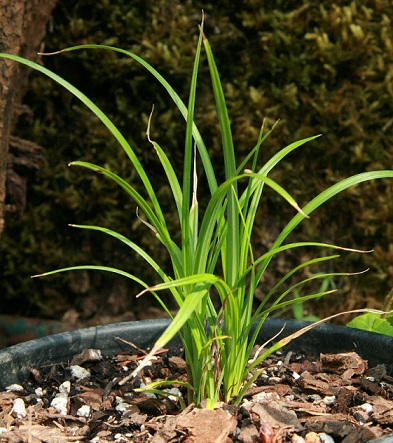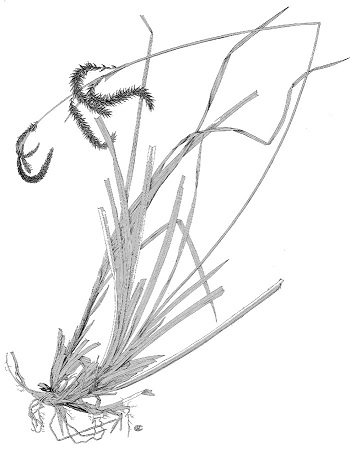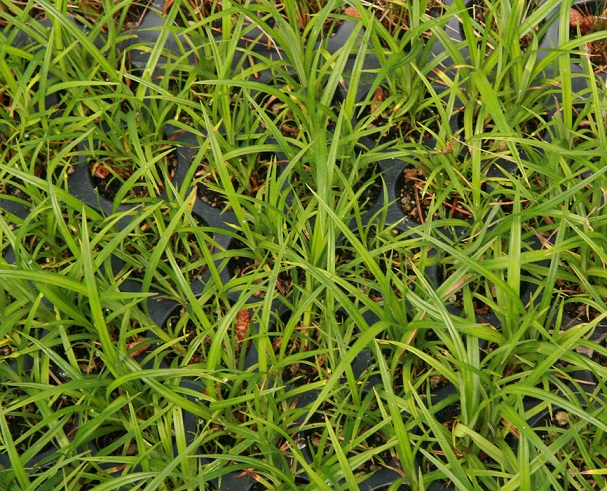|
|
|
Hansen's Northwest Native Plant Database |
|
|
Carex obnupta (Slough Sedge)
|
 |
||||||||||||||||||||||||||||||
|
The Slough Sedge is a rapidly growing perennial that spreads by rhizomes. While it is reported to reach heights of 5’, it usually grows to about 2’. The flowering portion of the plant (the inflorescense) is elongated with tightly clustered flowers on a central axis (or rachilla). These flowers are partially hidden by scales (or bracts) that are purplish-black. Both male and female fruits are borne on the same plant. The male flowers are about 2” long and form at the top of the stem. They die quickly after blooming whereas the female flowers bloom for many months and continue to grow during this time. The female flowers can reach lengths of 4” and are situated lower down the stem than the males. After flowering each flower forms a small, dry fruit containing a solitary seed (also called an achene). |
|||||||||||||||||||||||||||||||
|
Habitat and Range: Slough Sedge is found along the Pacific coast from California to British Columbia. It grows in bogs, marshes, wet meadows (where it can become quite weedy), ditches and the edges of rivers and lakes. It is very common in areas where fresh and salt water meet but is confined to lower elevations. Ornamental Value: Admittedly, the flowers of all sedges are not showy: the petals lack both bright colours and intricate forms. However, they are extremely unique in their form and their blooming cycle is remarkably long – from April to September. Moreover, the plant itself provides colour all year, never turning brown, even in the driest spells. There was a saying among the Hesaquiat First Nations tribe alluding to this: “You are just like the … (carex obnupta), you never change.” Native Plant Gardening/Wildlife Habitat: All sedges are extremely important to a variety of wildlife species. Birds of all type (waterfowl, shorebirds, songbirds and game birds) eat the seeds of Slough Sedge in moderate amounts. Muskrats eat the roots of Slough Sedge and small animals, such as turtles, muskrats and snakes, seek shelter in its foliage. Waterfowl nest in areas where sedges form a dense cluster. Amphibians lay their eggs at the base of these plants and the young are somewhat protected from predation. Moose depend on sedges to provide them with the sodium they need when calving [Delesalle, p. 45]. |
 |
||||||||||||||||||||||||||||||
|
Historical/Cultural uses: First Nations people used Slough Sedge in a variety of ways. The leaves were used in the making of hats and baskets. The leaves were also rubbed and laid inside moccasins for extra padding. Folklore has it that the leaves were so sharp that some First Nations men used them for shaving their faces. Lastly, after the introduction of domesticated animals in First Nations cultures, the plant was used for grazing livestock. |
|||||||||||||||||||||||||||||||
|
Propagation
Techniques: Carex obnupta can be grown from seed,
either planted directly or grown in pots and transplanted. However,
neither of these methods is recommended. Seed sown directly should be
scattered in autumn to emulate natural patterns and take advantage of
the fall rains. However, rising water levels and heavy rains often wash
seeds away. Plants grown from seed in pots tend to remain small and
stunted for extended periods of time and are difficult to establish.
Planting bare rootstock is the most successful means of propagating
these plants. These tender plants are best planted in the fall when the
rains begin. This will enable them to spend the dormant season
developing a healthy root system to sustain them through the summer dry
season.
For a short comparison of native wetland plants, click here. |
 |
||||||||||||||||||||||||||||||
|
Photo, left, credit: 2007 California Academy of Sciences; Photos, center and right, credit: Keir Morse |
Photos We Share!
|
||||||||||||||||||||||||||||||
Bibliography:
|
|||||||||||||||||||||||||||||||
|